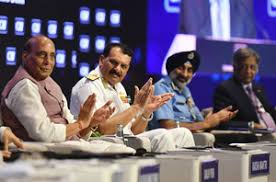Could have done a lot more, showed restraint: Rajnath on Operation Sindoor

Defence Minister Rajnath Singh recently made a powerful statement about Operation Sindoor, India’s response to the Pahalgam terror attack on April 22, 2025. Speaking at the CII Annual Business Summit, Singh said, “We could have done a lot more, but showed restraint.” His words reflect India’s choice to act with discipline and strength, sending a message to both adversaries and allies.
Why Operation Sindoor Was Launched
Terrorists struck Pahalgam, killing Indian soldiers and civilians. In response, India launched Operation Sindoor on May 7. The goal was clear—neutralize terror threats and disrupt their infrastructure. The operation mainly targeted groups like Jaish-e-Mohammed, Lashkar-e-Taiba, and Hizbul Mujahideen.
India Could Have Done More—but Chose Restraint
Rajnath Singh emphasized that India had the ability to launch a much larger offensive. However, the government made a conscious decision to act with restraint. “With great power must come greater responsibility,” he said. This move showcased India’s maturity on the global stage.
By choosing not to escalate, India demonstrated that it can act with precision and purpose, without being reckless. Singh’s remarks served to remind the world that India values peace but will defend itself when necessary.
A Highly Targeted and Strategic Operation
Operation Sindoor focused on specific terror camps and military infrastructure in Pakistan-occupied Kashmir (PoK). The Indian Air Force used precision-guided strikes to eliminate key threats. According to reports, over 100 militants were killed. These included top-level operatives from major terror organizations.
Unlike past responses, this operation avoided civilian harm. Singh praised the armed forces for their accuracy. He compared their actions to skilled surgeons who act with care and precision.
Indigenous Technology Was Key
Another standout element of the operation was India’s reliance on homegrown weapons and systems. Singh said that ‘Make in India’ defense products played a big role. These included Tejas fighter jets, Akash missiles, and DRDO-developed drones.
Indian engineers and scientists have worked hard to build reliable military equipment. Operation Sindoor showed that India no longer depends on foreign suppliers to defend its borders. This step marks major progress in India’s defense self-reliance.
Strong Message to Pakistan
Singh sent a direct message to Pakistan. He said India will now only talk about two things: terrorism and Pakistan-occupied Kashmir (PoK). He stressed that PoK belongs to India. “The people in PoK are ours, and they will return to us one day,” he added.
India’s foreign policy has clearly shifted. The focus is now on firm action over endless dialogue. Singh’s tone reflects India’s new stance: peaceful but strong, open to talks but only on non-negotiable issues.
Praising India’s Armed Forces and Women Warriors
Singh also praised the armed forces for their bravery and professionalism. He highlighted the role of women pilots and officers in Operation Sindoor. These women flew combat missions, gathered intelligence, and supported logistics.
Their contributions underline the growing role of women in India’s defense. Singh called them “silent warriors,” noting how they worked with focus and determination.
A New Military Doctrine
Rajnath Singh’s speech reveals a deeper shift in India’s military thinking. India now follows a doctrine of assertive defense. This means acting quickly, using smart tactics, and showing restraint when needed.
Instead of reacting emotionally, India responds with strategy. Operation Sindoor showed how modern warfare relies on speed, precision, and information. The Indian military used these tools effectively.
India’s Role on the Global Stage
India’s response has earned global respect. Many countries praised India for avoiding escalation and showing military discipline. By balancing power with control, India proved it can handle complex situations responsibly.
Singh’s remarks make it clear: India won’t tolerate terror, but it won’t act recklessly either. That balance is what sets India apart.
Conclusion
Operation Sindoor was not just a military mission. It was a message. India showed that it can strike hard when needed but still act with restraint. Rajnath Singh’s words highlighted a larger truth—India is ready to protect its people, defend its land, and lead with responsibility.
As the region watches closely, one thing is certain: India will continue to act with strength, wisdom, and the belief that peace must be backed by power.






